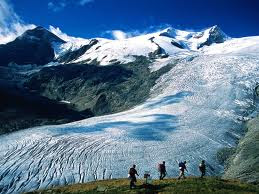Have a look and enjoy!!
The main purspose of this blog is to offer a sensible way to my students' parents of sharing the subject Science and Environment with their children.
Thursday, 8 November 2012
Thursday, 21 June 2012
Ancient Rome
Ancient Rome was a thriving civilization that began growing on the Italian Peninsula as early as the 8th century BC. Located along the Mediterranean Sea and centered on the city of Rome, it expanded to become one of the largest empires in the ancient world.
- The Roman Emperor: The man who ruled over the whole empire.
Click on Emperor Hadrian's coin to know more abouthe Emperors and Ancient Rome's History
3. The Roman army: They were grouped in legions and were highly disciplined and organised.
4.Civil architecture: It reflected the prestige, might and wealth of the Roman Empire. The architecture was a unifying symbol for the whole empire.
Wednesday, 20 June 2012
Ancient Greece
Ancient Greece is a group of cities called city-states. They were independent; e.g. Athens, Sparta, Corinth, Megara or Argas.
Greek architecture:
- Houses and farms: built with bricks and mud.
2. Temples and palaces: built with marble and limestone.
Greek mythology: They lived on the Olympus mountain, the most powerful was Zeus.
The Olympic Games: They took place every four years at Olympia.
Tuesday, 19 June 2012
Ancient Egypt
Around 5000 years ago the ancient Egyptians established an extraordinary and enduring civilization.
- The Nile river was very important for agriculture, it was the water source for the whole empire.
2. The writing: They wrote on papyrus, not on paper. They hadn't got an alphabet, they used hieroglyphs.
3. Afterlife: They believed that humans possessed a ka, or life-force, which left the body at the point of death.
Thursday, 10 May 2012
Pollution
Pollution is the introduction of contaminants into a natural environment.
We can distinguish three different pollution kinds:
We can distinguish three different pollution kinds:
- Water pollution: Some of the waste from towns, villages or factories is poisonous and end up in rivers and oceans.
For further information:
2. Air pollution: harmful substances enter the air we breathe.
For further information:
3. Land pollution: we produce a lot of rubbish, which can pollute the
land with dangerous substances for the soil.
Saturday, 28 April 2012
Rural Vs. Urban life.
Do you live in a rural or in an urban area? Answer this question as a comment to this post and you will get a lollipop!
Rural and Urban Life.
Urban life: Cities and towns:
- There are many different kinds of buildings.
- There are different urban transport systems: underground trains ( Ex. London´s Tube, NY´s Subway or Madrid´s Metro) or bus lines.
- There's a complex system of streets, avenues, squares and roads to move around a city.
Rural life: villages and hamlets.
- There aren't so many buildings and they are small.
- The public means of transport are used to go to other towns, cities or villages.
- Streets are narrow because the traffic is not a state.
- We can find farms in the villages or around them since they are on the countryside.
Tuesday, 24 April 2012
The tides
There are two different tides:
- The low tide.
- The high tide.
The tides are provoked by the Moon's Gravity.
Saturday, 21 April 2012
Oceans and seas.
Oceans are masses of salt water.
VS.
A sea is smaller than an ocean.
Can you place on the map the South China Sea, the Caribbean Sea, and the Mediterranean Sea?
Students leaving comments with underwater life video links will get a lollipop, come on fourth-graders!
Students leaving comments with underwater life video links will get a lollipop, come on fourth-graders!
Rivers.
A river is a stream of water.
A tributary river flows into another river.
Rivers flow along a channel.
The bottom of the river is the bed.
The sides of the channel are the banks.
Cliffs and plateaus
Cliffs are rock or soil steep walls.
A plateau is the plain where the houses are.
A plateau is a plain on a higher position.
Hills, mountains and valleys.
Mountains are high and have pointed tops. On the other hand, hills are not so high and have rounded tops.
Ex: The green ones are hills since they are not so high as the ones on the background, those are mountains: they are pointed topped.
Valleys are low areas among mountains or hills.
Can you see those mountains?
The valley is between them.
Monday, 6 February 2012
The excretory system.
Organs in the excretory system:
- Kidneys: They clean our blood.
- Ureters: Tubes conneccting the kidneys with the bladder.
- Bladder: Urine is stored in the bladder.
- Urethra: a tube that carries the urine out of the body.
Thursday, 2 February 2012
The circulatory system.
Types of blood vessels.
There are three types of blood vessels:
- Arteries: they carry blood full of nutrients and oxygen.
- Capillaries: they are small ones because they get to every part of our body.
- Veins: they carry blood poor in oxygen and nutrients.
Wednesday, 1 February 2012
Monday, 30 January 2012
The respiratory system
Inhalation: To breathe in.
Exhalation: To breathe out.
Inhalation:
- Our nose cleans and warms up the air.
- The air passes through the larynx and the windpipe.
- Then the windpipe is divided into the two bronchial tubes.
- Finally the air goes into the lungs.
Exhalation:
The air goes the opposite direction from the lungs to the nose/mouth through the bronchial tubes, the windpipe and the larynx.
Subscribe to:
Posts (Atom)




























